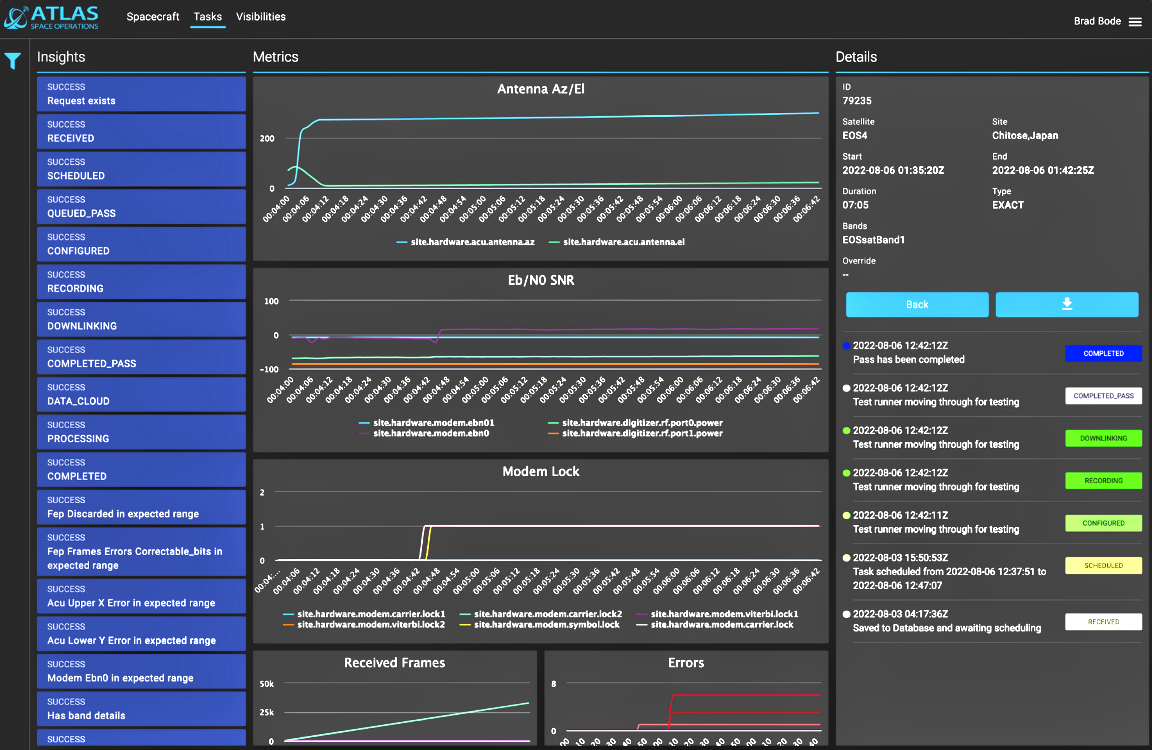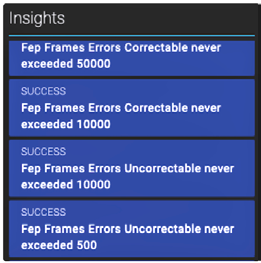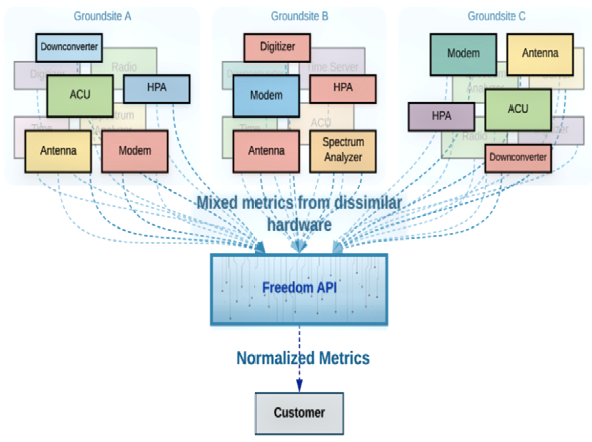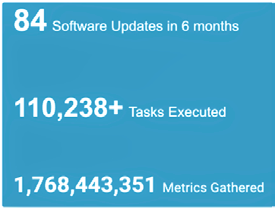If you are a spacecraft operator, it’s important to understand precisely what you are getting when you are selecting a ground station provider. Today, most antenna providers have adopted the term Ground Station as a Service (GSaaS) as a way to describe themselves in the marketplace.

When we first started ATLAS Space Operations in 2015, the term Ground Station as a Service wasn’t very well defined and, frankly, didn’t exist. We had the vision to offer the first “service” model for ground stations and, to this day, are considered a pioneer of GSaaS.
However, our vision was never to be solely a ground station provider. Instead, it was to overhaul the legacy built-industry by becoming a software company that provides essential features related to ground station services. Put another way…Atlas Space Operations Provide GSaaS.
Station vs Software? What is the difference you might ask?
Ground Station as a Service.
GSaaS is really just a subcategory of Infrastructure as a Service (IaaS), a term that was originally introduced around 2008 but didn’t take hold until 2012. National Institute of Standards and Technology (NIST) defines IaaS as...
The capability provided to the consumer is to provision processing, storage, networks, and other fundamental computing resources where the consumer is able to deploy and run arbitrary software, which can include operating systems and applications. The consumer does not manage or control the underlying cloud infrastructure but has control over operating systems, storage, and deployed applications; and possibly limited control of select networking components (e.g., host firewalls).

Sounds like antenna access, doesn’t it? You don’t own or control the hardware at the antenna location.
Amazon Web Services (AWS) Ground Station is the perfect example of GSaaS / IaaS. AWS draws a clear line between what you have to do as a developer and the AWS responsibilities.
However, with other companies you still must deploy your own hardware at the antenna site and process the radio frequency (RF). The only element this provider is giving you is a copper cable that is plugged into the antenna hardware. Doesn’t describe what you would think of when it comes to Infrastructure as a Service, does it?
Be careful when companies label themselves as GSaaS without first understanding where the boundary is between your infrastructure and theirs. You may be in for a much larger capital expense than you originally budgeted if you have to buy and deploy hardware or write extensive code.
Simply put, IaaS is the data pipe to your spacecraft.
Ground Software as a Service™
At ATLAS, we prefer to call ourselves a Ground Software as a Service company, putting us under the Software as a Service (SaaS) banner. The distinction is important because, with ATLAS, you’re not just getting network infrastructure for time on an antenna, as you are obtaining exceptional software by a world class team on a global antenna network.
As a GSaaS company, ATLAS offers a range of capability beyond a data pipe:

User Interface (UI)
All features required to request time, view metrics, and download data. Exceptional features including Task Insights and Free Time visualization.
API
All features available for integration via multiple Machine-to- Machine interfaces (Java , Python, REST).
Streaming Metrics
Near real-time metrics for all hardware streamed via Machine-to- Machine interfaces (A standard since 2015 for ATLAS)
Hardware Validation and Analytics
Immediately provides visualized and detailed evaluation of each and every pass performance through Task Freedom Software Insights
Integration & Testing
Software testing tools for API integration, such as telemetry playback, command validation, and data storage simulation in addition to providing equipment for end to end testing in your lab.
Documentation and Onboarding
Clear and consistent documentation with an easy to understand, step by step, onboarding process

Data Transformation
Federated network enabled with mixed-modem capabilities and frame header translation.
Backup, Recovery and Archiving
Site backup, cloud backup, and options for short or long term archiving of data.
Hardware and Baseband
Software management / Orchestration Hardware and baseband infographic

Consistent Abstraction
Metrics, telemetry, and commanding should all appear the same to the customer no matter the underlying hardware or software. I.e. Do not place the burden of integration on the customer.
Real-time Override
Operators need to adjust modem parameters before and during live passes without needing to know the specific hardware (ATLAS API Only).
Frequent Software Features and Patches
ATLAS averages 3-4 software updates per week (backwards compatible). Freedom frequent software features and patches
Being a Ground Software as a Service company requires being a software company first, rather than an infrastructure owner/operator. As a software company, the infrastructure is simply a means to an end, instead of the focus.
The offering of additional software services atop the infrastructure data flow is where the software company spends the most time. They add features on a regular basis, fix bugs as they arise, and continually push to offer a better solution so that customers do not have to devise new products to fill gaps.
Ground Software as a Service is the inevitable end product of where Ground Station services are headed. Aside from cost and location of antennas, the lines between providers will blur, which leads customers to look towards software features as the differentiator. At ATLAS Space Operations, we pride ourselves on listening to our customers’ needs and offering novel software solutions.

Contact ATLAS for more information about our Ground Software as a Service offering.

Brad Bode
Author Brad Bode is the Chief Technology Officer and Co-Founder, ATLAS Space Operations.


